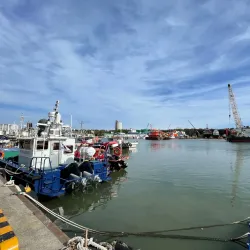Traffic Summary for Pohang
In 2024, Pohang's transportation landscape is dominated by bus usage and home-based work, reflecting a shift in commuting patterns. With significant CO2 emissions and inefficiency indexes, Pohang faces challenges in optimizing its traffic systems.
Average Commute Times
- Bus - Bus commuters experience a 5-minute wait and a 38-minute journey, with a total travel distance of 6.1 km.
Traffic Breakdown
Seasonal Trends
Traffic tends to increase during the summer months as tourists visit Pohang's coastal attractions. Winter sees a slight decrease in traffic, with more residents opting for remote work due to colder weather.
Commuter Pain Points
Long wait times for buses can be frustrating for commuters, especially during peak hours. Limited transportation options outside of buses may inconvenience those without access to private vehicles.
Best Travel Times
Early mornings before 7 AM and late evenings after 8 PM are the best times to avoid traffic congestion. Midday travel between 11 AM and 2 PM is also relatively smooth.
Event Impacts
Public events, such as festivals and sports matches, can significantly increase traffic, particularly around event venues. Planning alternative routes during these events can help avoid delays.
Sustainability Efforts
Pohang is investing in electric buses to reduce emissions and improve air quality. The city is also exploring bike-sharing programs to encourage eco-friendly commuting.
Ride-Sharing Impact
Ride-sharing services are gaining popularity, offering flexible and convenient travel options. These services help reduce the number of private vehicles on the road, potentially easing congestion.
Traffic Rankings
The Traffic Index for South Korea combines user-contributed data on commute times, traffic dissatisfaction, CO2 emissions, and traffic system inefficiencies in South Korea, to provide insights into overall traffic conditions.
Traffic Data
Overall average travel
Average when primarily using Bus
"Key Takeaways"
Enhancing the efficiency of bus services could significantly reduce commute times and emissions.
Promoting remote work and flexible schedules may help decrease overall traffic congestion.
Key Indexes
EmissionsPohang's CO2 emissions index is notably high at 1520, indicating a need for greener transportation solutions.
Efforts to reduce emissions could focus on increasing the efficiency of public transport.
TimeThe time index of 53 suggests moderate delays in commuting.
Improving bus schedules and reducing wait times could enhance commuter satisfaction.
InefficiencyAn inefficiency index of 82.53 highlights potential areas for improving traffic flow.
Streamlining bus routes and optimizing traffic signals could alleviate congestion.










